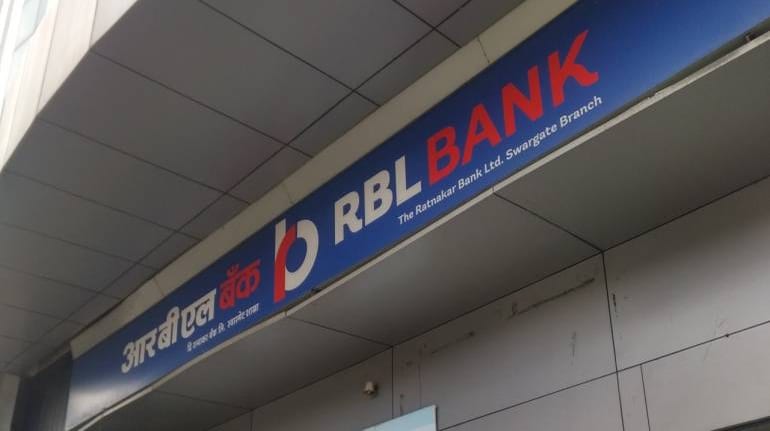



India’s banks have had the best run in years in terms of business and the same is showing in investor sentiment as well. Shares of most banks, from private to government-owned, have outperformed the broad market.
The Nifty Bank index has gained more than 7 percent in the last month and is roughly 4 percent up over the past year. Private sector bank shares have gained more than 8 percent, while public sector lenders have jumped nearly 12 percent in a month. But one bank has not been able to participate in this rally.
Shares of RBL Bank Ltd are down a massive 39 percent over the past year although they have seen some respite in the past one month. Notwithstanding the valuation erosion, analysts see a further downside and some have cut their target prices again. What is worrying investors in an environment most conducive to banks?
Management shake-up
RBL Bank’s troubles began when the bank’s chief executive officer (CEO) Vishwavir Ahuja quit unexpectedly in December 2021 and the Reserve Bank of India (RBI), with immediate effect, appointed an additional director for a period of two years. Rajeev Ahuja, the bank’s executive director, was named interim CEO. Investors, who had Yes Bank's troubles fresh in their minds, took this as a sign of some hidden trouble at the lender. What made things worse were the financials of RBL Bank.
Also read: Hiren Ved says market correction is over, is bullish on this banking stock
The bank’s loan book saw a surge in delinquencies after the pandemic. For instance, gross bad loans as a percentage of its total loan book had risen to 5.4 percent by Q2FY22 from 3.3 percent a year before. The lender had low provision cover for its stressed loans, coming in at just 62 percent against an average of more than 70 percent for peers.
The bank’s microfinance book and unsecured retail loans showed elevated slippages and its corporate book too witnessed some large hits. Uncertainty at the top amid adverse balance sheet developments made for a perfect storm when it came to the share price.
The hunt for a new CEO ended only last month when the bank appointed R Subramaniakumar as the new chief. But having new leadership in place hasn’t mollified investors and analysts yet. What they want to see is a sustained improvement in performance.
Also read: Banks have much cleaner books now; where did all NPAs go?
Multiple pain points
Unlike normal practice, Subramaniakumar has refrained from adopting a ‘kitchen-sinking’ approach. A change in leadership is typically followed by a jump in delinquencies as the new chief seeks to clean up the predecessor’s transactions, referred to as kitchen sinking, where all the bad news is given out at one go.
However, the bank’s first-quarter performance under Subramaniakumar showed an improvement in asset quality metrics. Gross bad loans are down to 4.1 percent and the provision coverage ratio has increased to 73 percent.
True, slippages are still elevated and the retail book is far from being stable. In the June quarter, 4.75 percent of the bank’s retail loans were non-performing, which is higher than the overall bad loan ratio.
RBL Bank’s retail book is heavy with unsecured lending, particularly credit cards, which makes the lender more vulnerable than others to weakening asset quality cycles.
Even though the bank’s loan book is tilted towards margin-friendly lending, its net interest margin shrank sequentially in the June quarter.
RBL Bank’s weak link is one of the lowest piles of low-cost deposits. Indeed, the bank’s deposits grew by a modest 6 percent for Q1FY23 and growth in low-cost current and savings account deposits were found wanting.
This does not augur well for margins in the future and could keep operating expenses at the bank higher, according to analysts. “Continued investments in distribution, technology, and new business segments, thus, make an elevated cost-to-income ratio in the medium-term inevitable,” HDFC Securities Ltd said in a July 21 note.
The way forward
It is clear that RBL Bank needs to build its liabilities, especially low-cost deposits. It also needs to reduce the unsecured portion of its loan book by doing more secured lending.
Towards this, the move to push housing loans and vehicle loans is positive. In a call with analysts after its June quarter results, the bank’s management had indicated that secured loans would grow faster than unsecured.
“RBL should recalibrate its loan book toward secured loans, including housing and vehicle loans (new/used) to bring quality and profitable growth,” wrote analysts at Emkay Global Financial Services Ltd.
The tentative improvement in asset quality and the new CEO’s assurances over it have allayed fears somewhat. Some analysts are hopeful that the bank would be able to show improved profitability in FY23.
Emkay has upgraded the stock from "hold" to "buy" while analysts at Motilal Oswal Financial Services see an upside of 58 percent for the stock.
That said, foreign brokerages are yet to change their ratings on the stock. Credit Suisse continues to keep an "underperform" rating and recently cut the target price. Bank of America, too, has an "underperform" call while JPMorgan has a neutral tag. The management has given an optimistic outlook and the bank needs to walk the talk now to enlist investor support.
Discover the latest Business News, Sensex, and Nifty updates. Obtain Personal Finance insights, tax queries, and expert opinions on Moneycontrol or download the Moneycontrol App to stay updated!
Find the best of Al News in one place, specially curated for you every weekend.
Stay on top of the latest tech trends and biggest startup news.